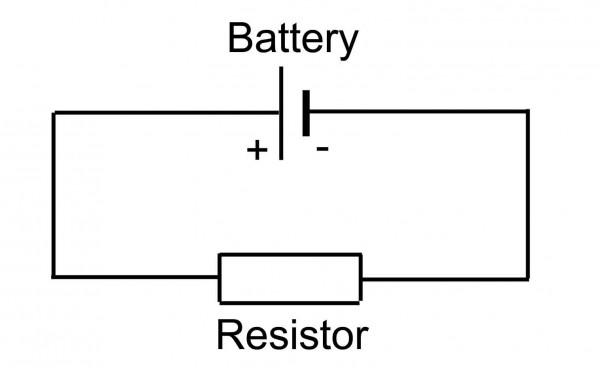
The power loss in an AC circuit is ${{E}_{rms}}{{I}_{rms}}$, when there in the circuit there is only
$\begin{align}
& A. C \\
& B. L \\
& C. R \\
& D. L,C,R \\
\end{align}$
Answer
580.2k+ views
Hint: Electrical power used up by a resistor in an AC circuit is very much different from the power consumed by the reactance since reactances do not dissipate energy. In a direct current circuit, the power consumed is given as the product of the DC voltage times the DC current, which is given in watts.
Complete step by step answer:
The ratio of the power absorbed by the input circuit of a transducer to the power delivered to a specified load; usually expressed in decibels. The power factor of an AC electrical power system is described as the ratio of the real power flowing into the load to the apparent power in the circuit. It is given as a dimensionless quantity and in the closed interval of -1 to 1. Inductors as well as capacitors bring a phase difference in between the voltage and the current in the circuit, hence varying the power factor. That is when there is only a resistance is present the power factor becomes one.
We also know that, the power loss in an AC circuit is given as,
$PL={{E}_{rms}}{{I}_{rms}}\times$ power factor
So here the power factor should be one for the required answer.

So, the correct answer is “Option C”.
Note: The ideal power factor is given as unity, or one. The value which is less than one means that extra power is needed to achieve the actual task at hand. All current flow will result in losses both in the supply and distribution system. A load with a power factor of one will cause the most efficient loading of the supply.
Complete step by step answer:
The ratio of the power absorbed by the input circuit of a transducer to the power delivered to a specified load; usually expressed in decibels. The power factor of an AC electrical power system is described as the ratio of the real power flowing into the load to the apparent power in the circuit. It is given as a dimensionless quantity and in the closed interval of -1 to 1. Inductors as well as capacitors bring a phase difference in between the voltage and the current in the circuit, hence varying the power factor. That is when there is only a resistance is present the power factor becomes one.
We also know that, the power loss in an AC circuit is given as,
$PL={{E}_{rms}}{{I}_{rms}}\times$ power factor
So here the power factor should be one for the required answer.

So, the correct answer is “Option C”.
Note: The ideal power factor is given as unity, or one. The value which is less than one means that extra power is needed to achieve the actual task at hand. All current flow will result in losses both in the supply and distribution system. A load with a power factor of one will cause the most efficient loading of the supply.
Recently Updated Pages
Master Class 12 English: Engaging Questions & Answers for Success

Master Class 12 Business Studies: Engaging Questions & Answers for Success

Master Class 12 Economics: Engaging Questions & Answers for Success

Master Class 12 Social Science: Engaging Questions & Answers for Success

Master Class 12 Maths: Engaging Questions & Answers for Success

Master Class 12 Chemistry: Engaging Questions & Answers for Success

Trending doubts
What are the major means of transport Explain each class 12 social science CBSE

Which are the Top 10 Largest Countries of the World?

Draw a labelled sketch of the human eye class 12 physics CBSE

Explain sex determination in humans with line diag class 12 biology CBSE

The pH of the pancreatic juice is A 64 B 86 C 120 D class 12 biology CBSE

Explain sex determination in humans with the help of class 12 biology CBSE




